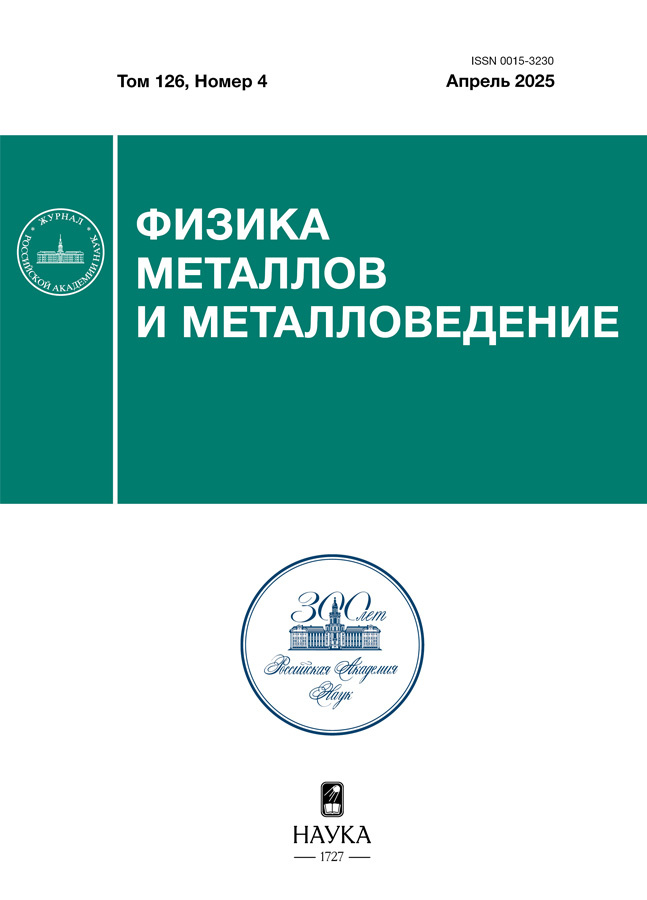Magnetic topological structures in ferromagnetic films with the Dzyaloshinsky–Moriya interaction
- Autores: Filippova V.V.1, Gareeva Z.V.1, Doroshenko R.A.1
-
Afiliações:
- Institute of Molecule and Crystal Physics, Subdivision of the Ufa Federal Research Centre of the Russian Academy of Sciences
- Edição: Volume 126, Nº 4 (2025)
- Páginas: 423-429
- Seção: ЭЛЕКТРИЧЕСКИЕ И МАГНИТНЫЕ СВОЙСТВА
- URL: https://hum-ecol.ru/0015-3230/article/view/688433
- DOI: https://doi.org/10.31857/S0015323025040024
- EDN: https://elibrary.ru/JMDPNC
- ID: 688433
Citar
Texto integral
Resumo
The influence of the Dzyaloshinskii–Moriya interaction on the formation and stability of 3D magnetic topological structures in exchange-coupled ferromagnetic films with different magnetic anisotropy has been investigated. The magnetization reversal processes in multilayer systems in the presence of a chiral magnetic layer have been analyzed. It has been shown that during the magnetization reversal, three-dimensional topological states such as Bloch points and conical skyrmions are formed, and the structure of topological defects is determined by the magnitude and sign of the Dzyaloshinskii–Moriya constant. The influence of material parameters on the magnetization reversal processes and the stabilization of micromagnetic structures has been studied.
Palavras-chave
Texto integral
Sobre autores
V. Filippova
Institute of Molecule and Crystal Physics, Subdivision of the Ufa Federal Research Centre of the Russian Academy of Sciences
Email: zukhragzv@yandex.ru
Rússia, Ufa, 450075
Z. Gareeva
Institute of Molecule and Crystal Physics, Subdivision of the Ufa Federal Research Centre of the Russian Academy of Sciences
Autor responsável pela correspondência
Email: zukhragzv@yandex.ru
Rússia, Ufa, 450075
R. Doroshenko
Institute of Molecule and Crystal Physics, Subdivision of the Ufa Federal Research Centre of the Russian Academy of Sciences
Email: zukhragzv@yandex.ru
Rússia, Ufa, 450075
Bibliografia
- Fert A., Cros V., Sampaio J. Skyrmions on the track // Nature Nanotechnology. 2013. V. 8. P. 152.
- Rybakov F.N., Borisov A.B., Blügel S., Kiselev N.S. New Type of Stable Particlelike States in Chiral Magnets // Phys. Rev. Lett. 2015. V. 115. P. 117201.
- Tejo F., Heredero R.H., Chubykalo-Fesenko O., Guslienko K.Y. The Bloch point 3D topological charge induced by the magnetostatic interaction // Sci. Rep. 2021. V. 11. P. 21714.
- Birch M.T., Cortés-Ortuño D., Litzius K., Wintz S., Schulz1 F., Weigand M., Štefančič A., Mayoh D.A., Balakrishnan G., Hatton P.D., Schütz G. Toggle-like current-induced Bloch point dynamics of 3D skyrmion strings in a room temperature nanowire // Nat. Commun. 2022. V. 13. P. 3630.
- Guslienko K. 3D Magnetization Textures: Toroidal Magnetic Hopfion Stability in Cylindrical Samples // Nanomaterials. 2024. V. 14. P. 125.
- Lang M., Beg M., Hovorka O., Fangohr H. Bloch points in nanostrips // Sci. Rep. 2023. V. 13. P. 6910.
- Pylypovskyi O.V., Sheka D.D., Gaididei Y. Bloch point structure in a magnetic nanosphere // Phys. Rev. 2021. V. 85. P. 224401.
- Beg M., Pepper R.A., Cortés-Ortuño D., Atie B., Bisotti M.-A., Downing G., Kluyver T., Hovorka O., Fangohr H. Stable and manipulable Bloch point // Sci. Rep. 2019. V. 9. P. 7959.
- Gareeva Z., Filippova V., Shulga N., and Doroshenko R. Magnetoelectric effects in magnetic films with alternating magnetic anisotropy: the emergence and stability of Bloch points // Phys. Chem. Chem. Phys. 2024. V. 26. P. 22164.
- Donahue M.J., Porter D.G. OOMMF User’s Guide, Version 1.0, No. NIST IR 6376. National Institute of Standards and Technology, 1999.
- Rohart S., Thiaville A. Skyrmion confinement in ultrathin film nanostructures in the presence of Dzyaloshinskii–Moriya interaction // Phys. Rev. B. 2013. V. 88. P. 184422.
- Junquera J., Nahas Y., Prokhorenko S., Bellaiche L., Íñiguez J., Schlom D.G., Chen L.-Q., Salahuddin S., Muller D.A., Martin L.W., Ramesh R. Topological phases in polar oxide nanostructures // Rev. Mod. Phys. 2023. V. 95. P. 025001.
- Ding S., Ross A., Lebrun R., Becker S., Lee K., Boventer I., Das S., Kurokawa Y., Gupta S., Yang J., Jakob G., Kläui M. Interfacial Dzyaloshinskii–Moriya interaction and chiral magnetic textures in a ferrimagnetic insulator // Phys. Rev. B. 2019. V. 100. P. 100406.
- Ma X., Yu G., Razavi S.A., Sasaki S.S., Li X., Hao K., Tolbert S.H., Wang K.L., Li X. Dzyaloshinskii–Moriya Interaction across an Antiferromagnet-Ferromagnet Interface // Phys. Rev. Lett. 2017. V. 119. P. 027202.
- Carey R., Beg M., Albert M., Bisotti M.-A., Cortés-Ortuño D., Vousden M., Wang W., Hovorka O., Fangohr H. Hysteresis of nanocylinders with Dzyaloshinskii–Moriya interaction // Appl. Phys. Lett. 2016. V. 109. P. 122401.
- Сукстанский А.Л., Ямпольская Г.И. Динамическая магнитная восприимчивость двуслойной пленки в сильном магнитном поле // ФТТ. 2000. Т. 42. № 5. С. 866.
- Caretta L. et al. Interfacial Dzyaloshinskii-Moriya interaction arising from rare-earth orbital magnetism in insulating magnetic oxides // Nat. Commun. 2020. V. 11. P. 1090.
- Fakhrul T., Khurana B., Lee B.H., Huang S., Nembach H.T., Beach G.S. D., Ross C.A. Damping and Interfacial Dzyaloshinskii–Moriya Interaction in Thulium Iron Garnet/Bismuth-Substituted Yttrium Iron Garnet Bilayers // ACS Appl. Mater. Interfaces. 2024. V. 16. P. 2489.
- Guslienko K.Yu., Chubykalo-Fesenko O., Mryasov O., Chantrell R., Weller D. Magnetization reversal via perpendicular exchange spring in FePt/FeRh bilayer films // Phys. Rev. B. 2004. V. 70. P. 104405.
- Hoffmann F., Stankoff A., Pascard H. Evidence for an Exchange Coupling at the Interface between Two Ferromagnetic Films // J. Appl. Phys. 1970. V. 41. Р. 1022.
- Zhao G.P., Deng Y., Zhang H.W., Cheng Z.H., Ding J. Accurate calculation of the nucleation field and hysteresis loops in hard-soft multilayers // J. Appl. Phys. 2011. V. 109. Р. 07D340.
Arquivos suplementares












